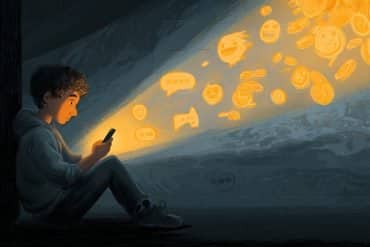Study is the first to focus on pain experienced during sleepwalking.
A new study of sleepwalkers found an intriguing paradox: Although sleepwalkers have an increased risk for headaches and migraines while awake, during sleepwalking episodes they are unlikely to feel pain even while suffering an injury.
Results show that sleepwalkers were nearly 4 times more likely than controls to report a history of headaches (odds ratio = 3.80) and 10 times more likely to report experiencing migraines (OR = 10.04), after adjusting for potential confounders such as insomnia and depression. Among sleepwalkers with at least one previous sleepwalking episode that involved an injury, 79 percent perceived no pain during the episode, allowing them to remain asleep despite hurting themselves.

“Our most surprising result was the lack of pain perception during the sleepwalking episodes,” said principal investigator Dr. Regis Lopez, psychiatrist and sleep medicine specialist at Hospital Gui-de-Chauliac in Montpellier, France. “We report here, for the first time, an analgesia phenomenon associated with sleepwalking.”
Study results are published in the Nov. issue of the journal Sleep.
Lopez and colleagues Isabelle Jaussent, PhD, and Prof. Yves Dauvilliers conducted the cross-sectional study of 100 healthy control subjects and 100 patients with a diagnosis of sleepwalking, including 55 males and 45 females. Sleepwalkers had a median age of 30 years. Daytime pain complaints were evaluated by a clinician and self-report questionnaires, which assessed lifetime headache frequency and headache characteristics.
Forty-seven sleepwalkers reported having experienced at least one injurious sleepwalking episode. Only 10 reported waking immediately due to pain; the other 37 perceived no pain during the episode, but felt pain later in the night or in the morning.
For example, one patient sustained severe fractures after jumping out of a third-floor window while sleepwalking but didn’t feel the pain until after waking up later in the night. Another patient broke his leg during a sleepwalking episode in which he climbed onto the roof of his house and fell down, but he didn’t wake up until morning.
“Our results may help to understand the mechanisms of the sleepwalking episodes,” said Lopez. “We hypothesize that a dissociate state of arousal may modify the components of sleep-wake behavior, consciousness, and also pain perception.”
The American Academy of Sleep Medicine reports that sleepwalking — or somnambulism — is a common sleep disorder that affects up to 4 percent of adults. Classified as a ‘parasomnia,’ which is a group of sleep disorders involving undesirable physical events or experiences, sleepwalking occurs during incomplete awakenings from deep sleep. The sleeper walks and displays other complex behaviors while out of bed.
Source: Lynn Celmer – American Academy of Sleep Medicine
Image Credit: The image is credited to John Everett Millais and is in the public domain
Original Research: Abstract for “Pain in Sleepwalking: A Clinical Enigma” by Régis Lopez, MD1,; Isabelle Jaussent, PhD; and Yves Dauvilliers, MD, PhD in Sleep. Published online November 2 2015 doi:10.5665/sleep.5144
Abstract
Pain in Sleepwalking: A Clinical Enigma
Study Objectives:
Sleepwalking is a disorder characterized by arousal specifically from slow wave sleep with dissociated brain activity that may be related to lower nociceptive state. Our objectives were to assess the frequency of chronic pain, headache, and migraine in sleepwalkers compared to controls, examine the impact and determinants of pain in sleepwalkers, and report analgesia frequency during injurious parasomnia episodes.
Design:
Cross-sectional case-control study.
Setting:
Data were collected at the Sleep Disorders Center, Montpellier, France.
Participants:
One hundred patients with sleepwalking were assessed for disease characteristics, sleep (polysomnography, sleepiness, and insomnia), pain (chronic pain, multidimensional pain inventory, headache, and migraine), depressive symptoms, and quality of life compared to 100 adult controls. Pain perception was retrospectively assessed during injurious parasomnia episodes.
Measurements and Results:
Raw association data showed that lifetime headache, migraine, and chronic pain at time of study were significantly associated with sleepwalking (also called somnambulism). Compared to controls, sleepwalkers reported more frequent daytime sleepiness, and depressive and insomnia symptoms. After adjustments, sleepwalking was associated with increased risk for headache and migraine only. Compared to pain-free sleepwalkers, sleepwalkers with chronic pain were more likely to be older and to have greater daytime sleepiness, insomnia, and depressive symptoms, with no difference in polysomnography assessment. Of the 47 sleepwalkers with at least one previous violent parasomnia episode, 78.7% perceived no pain during episodes, allowing them to remain asleep despite injury.
Conclusion:
Our results highlight the clinical enigma of pain in sleepwalking patients with complaints of frequent chronic pain, migraine, and headache during wakefulness but who report retrospectively experience of analgesia during severe parasomnia episodes, suggesting a relationship between dissociated brain activity and nociceptive dysregulation.
“Pain in Sleepwalking: A Clinical Enigma” by Régis Lopez, MD1,; Isabelle Jaussent, PhD; and Yves Dauvilliers, MD, PhD in Sleep. Published online November 2 2015 doi:10.5665/sleep.5144






